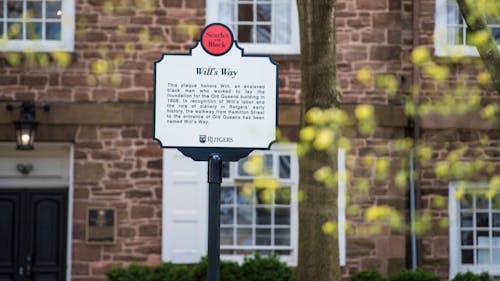EDITORIAL: Black students at Rutgers deserve more than posters
Rutgers needs to shift from performative gestures to substantial changes for Black community

Black History Month has been a contentious topic for many years. People have argued about its effectiveness and have emphasized the importance of incorporating Black history into U.S. history throughout a curriculum’s entirety rather than seemingly checking the boxes off the list in February.
More specifically, Black History Month has been condemned as being largely performative instead of encouraging concrete, genuine action. Rutgers students can see this type of performative action around campus, especially in dining halls, where numerous pictures of prominent Black figures are displayed, ranging from former President Barack Obama to Oprah Winfrey. And the question that naturally follows is, what does this actually do?
In essence, nothing. Consequently, these kinds of performative actions do very little to address Rutgers' long history of racism and lack of Black representation. In 2015, former Chancellor Richard L. Edwards started the Committee on Enslaved and Disenfranchised Populations in Rutgers History in response to student pressure demanding the University acknowledge its racist past.
This resulted in the Scarlet and Black Project, which focused on shedding light on the experiences of Black people in the Rutgers community. The project also produced three volumes detailing how many of the University’s founders were slave owners and how it benefited from slave labor in its construction.
The project also resulted in a series of historical markers throughout campus that acknowledge names of buildings connected to slavery, including Frelinghuysen, Hardenbergh and Milledoler Halls on the College Avenue campus, all of which are named after slave owners who were against abolition.
Prior to the markers being placed, some buildings were renamed to honor specific Black individuals. For example, the Sojourner Truth Apartments on the College Avenue campus are meant to honor Truth, who was enslaved as a child by the family of Rutger's first president, Jacob Hardenbergh.
Even though the Scarlet and Black Project has made strides to hold Rutgers accountable for its racist past, many students still remain unaware, which is problematic. Additionally, the University's actions may be seen as contradictory or confusing because it renamed certain buildings after enslaved individuals but kept the names of others that were named after slave owners. A good rule of thumb would be to rename all building names tied to slavery while keeping up markings that explain the building's racist history.
A big problem with this principle is that the University's name itself would have to be changed since its founder, Henry Rutgers, owned slaves himself. This change is unlikely, as University President Jonathan Holloway said at the start of his tenure that Rutgers will keep its name. This goes to show the sinister history that Rutgers must grapple with.
But featuring pictures of random Black celebrities in dining halls is not very productive. It feels as if Rutgers is making lackluster, forced attempts to honor Black history when they should instead be making a substantial attempt to support the Black community.
For one, if the University wants to highlight certain Black figures or leaders in society, they should instead hang pictures of Rutgers alum with blurbs about their personal stories. Second, posters could be used to advertise the dates and times in which Rutgers is hosting events relevant to Black History Month so that students may support those initiatives.
Ultimately, it is not enough for Rutgers to implement historical markers and hang flyers if they do not make students aware of their presence. The University could address this by sending a mass email to the community encouraging students to read the signposts and attend events. Additionally, a mass email to the student body should include resources that are available to Black students as well as scholarships they can apply to and Black student groups.
Additionally, it is important to acknowledge the lack of representation of Black students on the New Brunswick campus. Comparatively to the Camden and Newark campuses, the New Brunswick campus has a significantly lower percentage of Black students.
The Camden and Newark campuses have experienced neglect in funding in comparison to New Brunswick because of enrollment rates dropping. Rutgers should be doing more to ensure that it is investing more equitably in all campuses, as this directly impacts Black students.
On top of this, over the past couple of years, Black studies have struggled to remain afloat in colleges while having a lack of funding. Rutgers could do more to ensure that it is supporting its Department of Africana Studies and Black History courses to better uplift the Black community.
Rutgers should not continue the same performative gestures every year. It needs to focus on concrete action that includes communicating to the student body about existing resources, reaching out to Black students and Black student groups, reminding students to educate themselves on Rutgers’ racist past, providing more equitable funding across campuses and actively keeping Black studies programs afloat.
The Daily Targum's editorials represent the views of the majority of the 155th editorial board. Columns, cartoons and letters do not necessarily reflect the views of the Targum Publishing Company or its staff.



